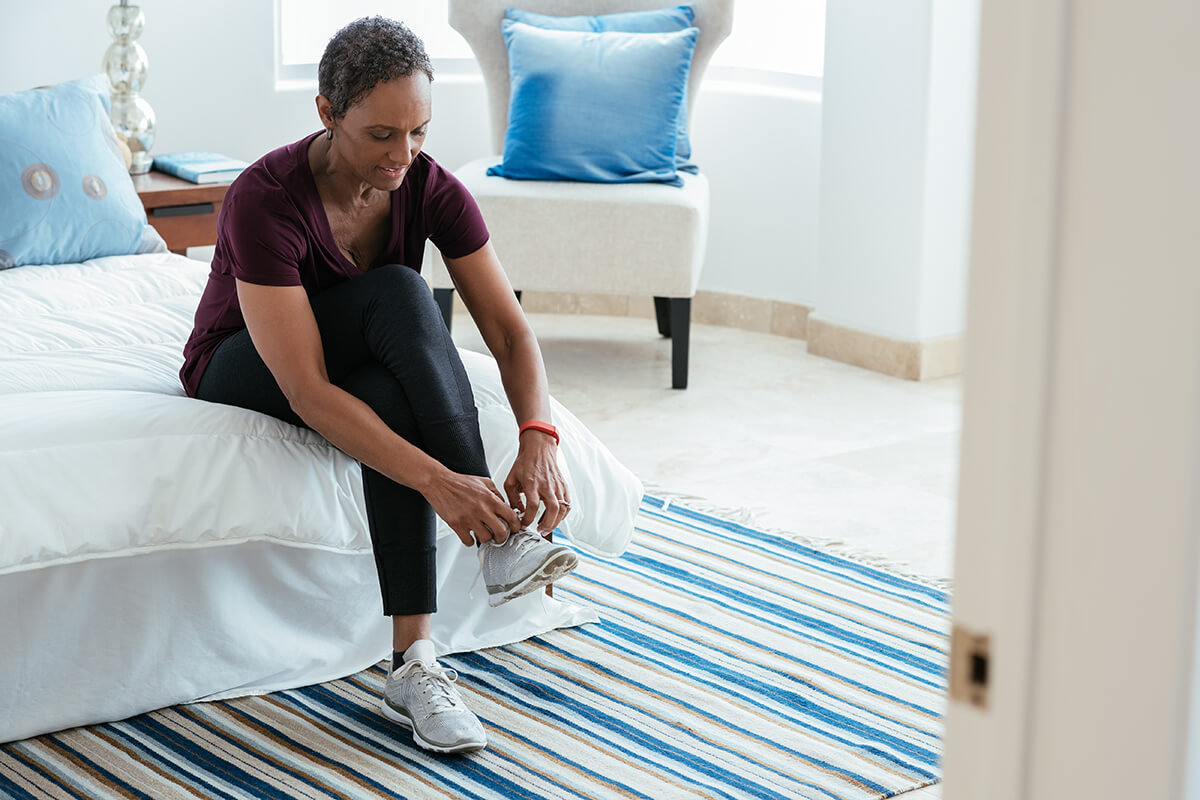5 common causes of foot pain

It may be easy to take your feet for granted. But they’re actually complex parts of the body. There are 26 bones, 33 joints and more than 100 tendons, muscles and ligaments in each foot alone.1
So, it’s not uncommon for aches and pains to develop. And because achy feet may make getting around a whole lot harder, it’s a good idea to understand what’s causing the pain.
“Foot pain can occur if someone is suddenly very active after being sedentary,” says Bruce Pinker, D.P.M., a board-certified doctor of the American Board of Podiatric Medicine, who practices at Progressive Foot Care in Nanuet, New York. Tight-fitting footwear can also be a culprit, as can getting older, which may lead to arthritis of the feet.
Many types of foot pain may resolve on their own in a few days, especially with rest. Still, it’s important to pay attention to the symptoms. That will help you recognize when it’s time to talk to a doctor. Here are 5 causes of the most common foot aches and pains.
Bunions
Bunions are bony bumps on the base of the big toe, more common in women than men. They may be caused by poor footwear, family history or joint disease like rheumatoid arthritis.2
According to the OrthoInfo, bunions often appear as a visible bump, but other symptoms include:2
- Pain and tenderness
- Redness and inflammation
- Hardened skin on the bottom of the foot
- Calluses
- Stiffness and restricted motion in the big toe, leading to difficulty walking
For minor bunions, there are a few options to limit the pain like changing your footwear, adding support in your shoes or wearing splints or toes spacers. If you continue to experience pain, your doctor may recommend bunion surgery. The procedure corrects alignment within the bones, ligaments, tendons and nerves.2
Plantar fasciitis
Planter fasciitis is caused when too much pressure on the ligament that runs along the bottom of your foot — from the heel to the front of the foot — becomes irritated and inflamed. This ligament supports the arch and absorbs pressure from running and walking.3
During movement like exercising or after getting out of bed in the morning, you may experience pain which could feel like a sharp, stabbing sensation in the heel of the foot.3
Treatment includes over-the-counter (OTC) pain relievers like ibuprofen and physical therapy. Stretching the calves and feet before you work out or when you feel pain is important. It helps to wear comfortable, well-padded sneakers too. As you heal, you may also have to switch to low-impact sports (like swimming) or walking or running on softer surfaces for a few months.3
Stress fractures
Stress fractures are microscopic fractures or severe bruising within the bones of the feet, caused by overusing the foot.4
Runners (especially marathon runners) are at risk of stress fractures, along with those who increase physical activity without gradually building up to it can also up the odds of stress fractures.4
Pain occurs in the area fractured and often becomes worse as you move around. Resting the foot and icing it may lessen the pain. However, treatment can take 6 to 8 weeks for stress fractures to properly heel. A provider may recommend rest, casting the foot, wearing supportive shoes and changing up activities. For serious fractures, you may need surgery.4
Hammer toe
Typically, hammer toe is when the toe bends downward at the middle joint so it looks like a claw. This often affects the toe closest to the big toe, but it could happen to the other toes too.
The main cause is wearing shoes that are too-tight because it can force the toe joint to bend. This may cause pain in the affected toe when walking or wearing shoes. Over time, you may find it hard to move your toe.5
If you can still move your toe, you can avoid making hammer toe worse by changing your footwear. Sometimes, wearing a toe device called a regulator or straightener can keep the toes straight. Left untreated, hammer toe may worsen and require surgery to fix.5
Achilles tendinitis
The Achilles tendon is the large tendon running down the back of the ankle. When it becomes inflamed, it is known as Achilles tendinitis.6
Like stress fractures, this is mostly due to overuse — for example, by playing a sport where you run or jump a lot. It can also be caused by ramping up a physical activity, either by doing it more intensely or for a longer amount of time. Tendinitis can also occur in those with arthritis.6
Pain often occurs along the heel and back of the ankle. It may hurt when you touch it or when you walk. Rest, ice and OTC pain relievers can also help ease symptoms.6
All these common causes of foot pain can generally be treated with rest, OTC pain medications and wearing comfortable, wide-toed shoes or sneakers. Still, it’s important to talk with a provider about any unusual symptoms, especially for people with pre-existing medical conditions like diabetes or who are over 65, as they are more vulnerable to foot problems, explains Dr. Pinker.
If you have foot pain that goes away and then comes back, it’s a good idea to see your primary care provider who may connect you with a podiatrist — a type of physician and surgeon who treats the feet and ankles. A podiatrist can perform a thorough evaluation, so that the root cause can be addressed, explains Dr. Pinker.
“We need our feet to get us from point A to point B, and they must last a lifetime,” Dr. Pinker says. Try checking your feet every so often so that you can talk to your provider if you notice anything out of the ordinary. That can help keep your feet pain-free and healthy for years to come.